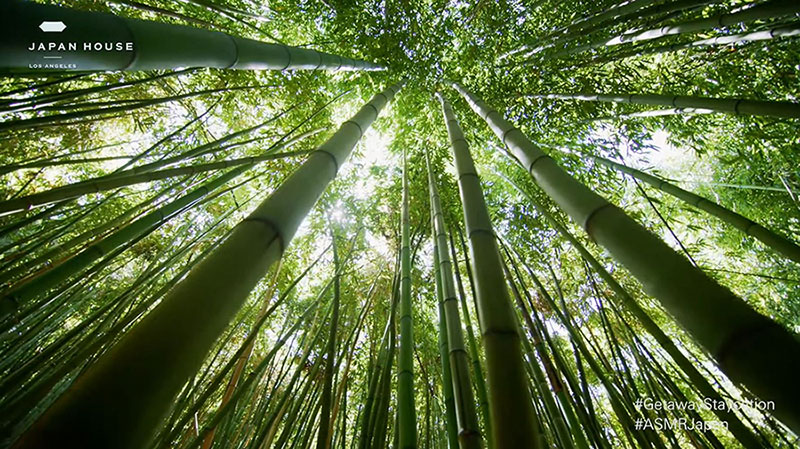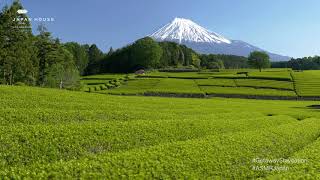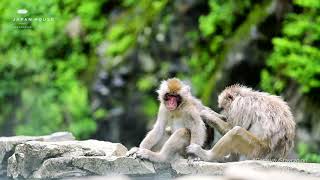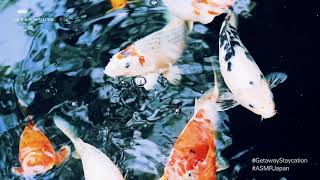
*To watch the video in full screen, please click play and then the YouTube icon on the lower right-hand corner.
Bamboo Forest
Tucked away on the outskirts of Kyoto, the Arashiyama Bamboo Forest has long attracted visitors who seek serenity and peace inside the densely packed grove of towering bamboo stalks. Designated by the Japanese Ministry of Environment as an attraction in the “100 Soundscapes of Japan” list, the Arashiyama Bamboo Grove is a verdant sanctuary filled with the rhythms of rustling leaves and creaking wood that encourages visitors to pause and appreciate the sounds of nature. A walk down the sun-filtered bamboo lined path is an opportunity to reflect and meditate on the ephemeral beauty of nature.

Tea Plantation in Shizuoka Prefecture
Located along the Pacific coast on one side and mountainous green forests on the other, Shizuoka Prefecture is a popular retreat for tourists looking to explore Shizuoka’s rich natural treasures and outdoor activities. From the hills known as the Nihondaira Plateau, a panoramic vista offers visitors views of the Pacific coast, Mt. Fuji, Japan’s Southern Alps, and the Izu Peninsula, as well as vast plantations for the production of tea, Shizuoka’s most well-known commodity.

Jigokudani Monkey Park
Off the beaten path in a valley situated in the northern part of Nagano Prefecture, host of the 1998 Winter Olympics, the Jigokudani Monkey Park is home to bands of Japanese macaque monkeys who roam the steep cliffs but come down in the winter to soak in natural hot springs (onsen), offering visitors the unique experience of seeing these wild creatures up close. More commonly known as Snow Monkeys, the macaques enjoy spending time by the hot springs, soaking in the warmth of the waters and enjoying food served by park attendants.

Koi Pond
Japanese koi are a symbol of longevity, prosperity, and luck—these colorful, vibrant fish are ornamental versions of the common carp and often kept in garden ponds in appreciation of their beauty. Koi add beauty and serenity to Japanese gardens with some must see spots such as the Hotel New Otani Tokyo, which features a 10-acre garden with ponds filled with golden koi, and the Namonaki Ike, otherwise known as Monet’s Pond, in Gifu Prefecture. Monet’s Pond, with its vibrantly colored koi swimming lazily beneath crystal clear waters and neon-bright water lilies, is a living, breathing homage to Claude Monet’s “Water Lilies” series and the Impressionist era.
In Shimabara City, Kagoshima Prefecture, the area south of Shimabara Castle is lined with koi-filled canals, allowing visitors to experience the beauty of koi set to the backdrop of historical architecture. Known as the “City of Swimming Carp,” Shimabara City is also home to the Shimeiso Spring Garden which features a tea house raised above the water in stilts. Visitors can sit and enjoy a cup of green tea while observing the koi swimming beneath.

